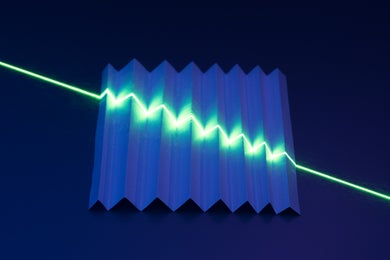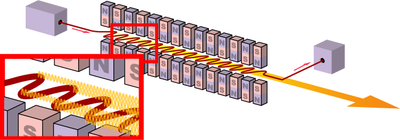Free electron nano-lasers structure, function based on PhD nano-microelectronics
Researcher and author: Dr. ( Afshin Rashid)
Note: Free electron nano-lasers have powerful military applications such as very high potential efficiencies. Nano-lasers are often based on the concept of population inversion between energy levels of bound states of matter, meaning that the electrons are either attached to the atom and the molecule or the electrons are moving along several atoms.
In free electron nano-lasers, electrons have even greater freedom of movement than these. The basis of the free electron laser is the oscillation of electrons in a vacuum that is devoid of any material gain medium. The basis of a laser beam is that an electron beam passes through an alternating magnetic field called a conductor at a speed close to the speed of light. The relativity of electrons causes a frequency fluctuation to be transmitted from the low frequency observed in the electron-mounted coordinate system. The precise characterization of the free electron nanos laser requires the application of the theory of relativity, but some basic concepts can be understood without it. . We know that electrons radiate rapidly and also by radiation from an antenna in which they oscillate back and forth over a fixed path.
In a free electron laser, like any other laser, the gain of the laser is due to the presence of induced emission. The high power of the free electron nano-laser has received more attention in the military field. The quality of the laser output is determined by the quality of the electron beam. Divergence of electron beam angles leads to a decrease in gain, non-uniformity in magnets produces emission diffusion. A pulsed electron beam leads to a pulsed laser output and a continuous electron beam leads to a continuous laser output.
Conclusion :
Free electron nano-lasers have powerful military applications such as very high potential efficiency. Nano-lasers are often based on the concept of population inversion between energy levels of bound states of matter, meaning that the electrons are either attached to the atom and the molecule or the electrons are moving along several atoms.
Researcher and author: Dr. ( Afshin Rashid)
PhD in Nano-Microelectronics




